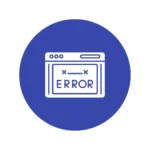Banks charge fees for using their services, which include, savings bank accounts, checking accounts, current accounts, debit cards, and credit cards. These fees can add up quickly, so it’s important to keep an eye on your statements and use only the services that you need.
Savings account charges are one of the deductions that we usually ignore. Yes, we have seen these charges every time we look into our bank statement. Sometimes, it is as low as ₹12. It may even go up to ₹1000, you know.
It also depends on the bank where you maintain your bank account. Some banks may charge less, and others may charge you a hefty amount.
Likewise, the current account charges are nothing less. This article is presented to those who are looking for ways and means to minimise bank account charges and fees.
To maximise the interest income on the savings bank account and minimise income leakage on the business current account. Read on!
Understand Your Bank Account
It is a basic, simple remark that one needs to explore. That is, understanding the ABC of your bank account.
In the bank, you may find a wide range of bank accounts. Sometimes, choosing the correct bank account for your business or personal use may even be confusing.
You have visited the bank to open an account, The bank offers you an array of bank account products that make you wonder whether you are in a shopping mall or in the bank.
Nevertheless, make yourself acquainted with it and choose the most simple bank account. Understand its pros and cons. To make it simple, just jot down a few points on what you need. These can be summed up as follows:
- How much money do you need to open that particular bank account?
- Is internet banking and mobile banking available?
- Is your bank accessible from anywhere?
- What charges and fees do you have to pay annually?
- Does your bank provide home services?
These few questions may help you decide better when choosing your bank and bank account.
Use Account Under The Limit
Banks usually give you a certain number of free transactions per month or per year. Try not to go beyond that limit.
As long as you are under these limits, you won’t pay extra fees. If you own a business, then it would be better to use a business current account rather than a savings bank account.
If you do decide to make deposits into your savings account, try to avoid multiple deposits with cash or checks.
This will help reduce the number of fees you pay when withdrawing funds.
You should also avoid making large deposits at once because banks often charge higher fees for large deposits as cash handling charges.
Deposit Money Directly Into Your Bank Account.
Banks charge fees for each transaction made through an ATM machine. Cash deposits through CDM-Cash Deposit Machine charge a fee per transaction, which may be ₹25 per transaction.
These fees vary by location and type of account. In addition, some banks charge monthly maintenance fees. It is better to use direct deposit to avoid these fees.
The amount of the deduction fee may vary between banks. Some banks, such as the State Bank of India, ICICI, and HDFC, charge nominal rates, which are between 1 and 3 percent of the deposit amount.
Other banks may charge you more.
Minimize Using Facility That’s Of No Use.
You might get frequent offers from the bank. To encourage you to avail of new services. These may include services such as home delivery, SMS alerts, door-to-door banking, multiple ATM cards, multiple credit cards, tele-calling services, etc.
Minimize using these services, which may add up to a fee deduction from the account. In fact, if you use Internet banking, there are hardly any additional services that you require. All of this can be done on your own.
Remember, SMS and email aleart services is one of the crucial part of account maintenance. Make sure to use the service. It will alert you on time for unauthorised transaction.
Pay Outstanding Dues On Time.
If you have availed loans and advances from the bank, make sure your EMI is properly deducted on time.
The bank charges penalties for late payment of the monthly installment. Some percentage of the overdue amount will be levied on your account. It varies from bank to bank, but it is usually 2 to 3 percent of the defaulted amount.
Keep a check on your monthly EMIs, it will save you from income leakage. It may be as small as a few hundred bucks. In the long run, it will save you more than you expected.
Don’t Ask To Print Your Statement Of Account.
Printing anything costs money. Likewise, the bank may charge you for the statement of account that you ask for. There are other means to get access to your account. You may use Internet banking or mobile banking.
With that, you can see your account balance. You can even download your account statement for free of course.
Check Your Account Statement Frequently.
It’s important to go through your account statement from time to time. It will enable you to know what is going on with your account. Every transaction in your account gives you an alert, either by email or as an SMS.
But giving a few moments to your account transaction is a must. That is how you start controlling your personal finances.
If the unknown transaction is reflected there, you may have ample time to address it to the concerned authority, which is your bank.
Always Have A Backup Card For Emergency Purposes.
You should also make sure that you have a backup card with you at all times. It will help you avoid charges and fees when you need to withdraw money from an ATM machine.
Maintain Balance In Account As Per Bank’s Terms and Conditions.
Do you know the word MAB or QAB? MAB stands for Monthly Average Balance, and QAB stands for Quarterly Average Balance.
These are the minimum balances set by the bank for you to maintain in the account.
It may be as low as ₹500, but it may go up to ₹100000. Depending on the type of savings bank account.
You will know about it when you have opened the account. The bank will usually advise you as per your account type.
Maintain these minimum average balances and stay away from those penalties.
Conclusion
Charges and fees on bank accounts are not a new thing. Banks have been levying these fees on customers for as long as we know. It is we who need to be aware of these charges and fees.
Savings bank accounts, business current accounts, and other services such as ATM cards and credit cards have their own rules regarding the matter.
Following a few basic uses of these services might actually reduce income leakage in a much better way. First of all, you have to understand the type of bank account you have.
Using it under the limit is another effective way to reduce the cost.
Furthermore, you can execute transactions in a way that impacts the least. These could be not relying on CDM as it charges you, abstaining from uses of services that do not concern you, paying obligations on time, and relying on digital media for any sort of bank account-related enquiries.







